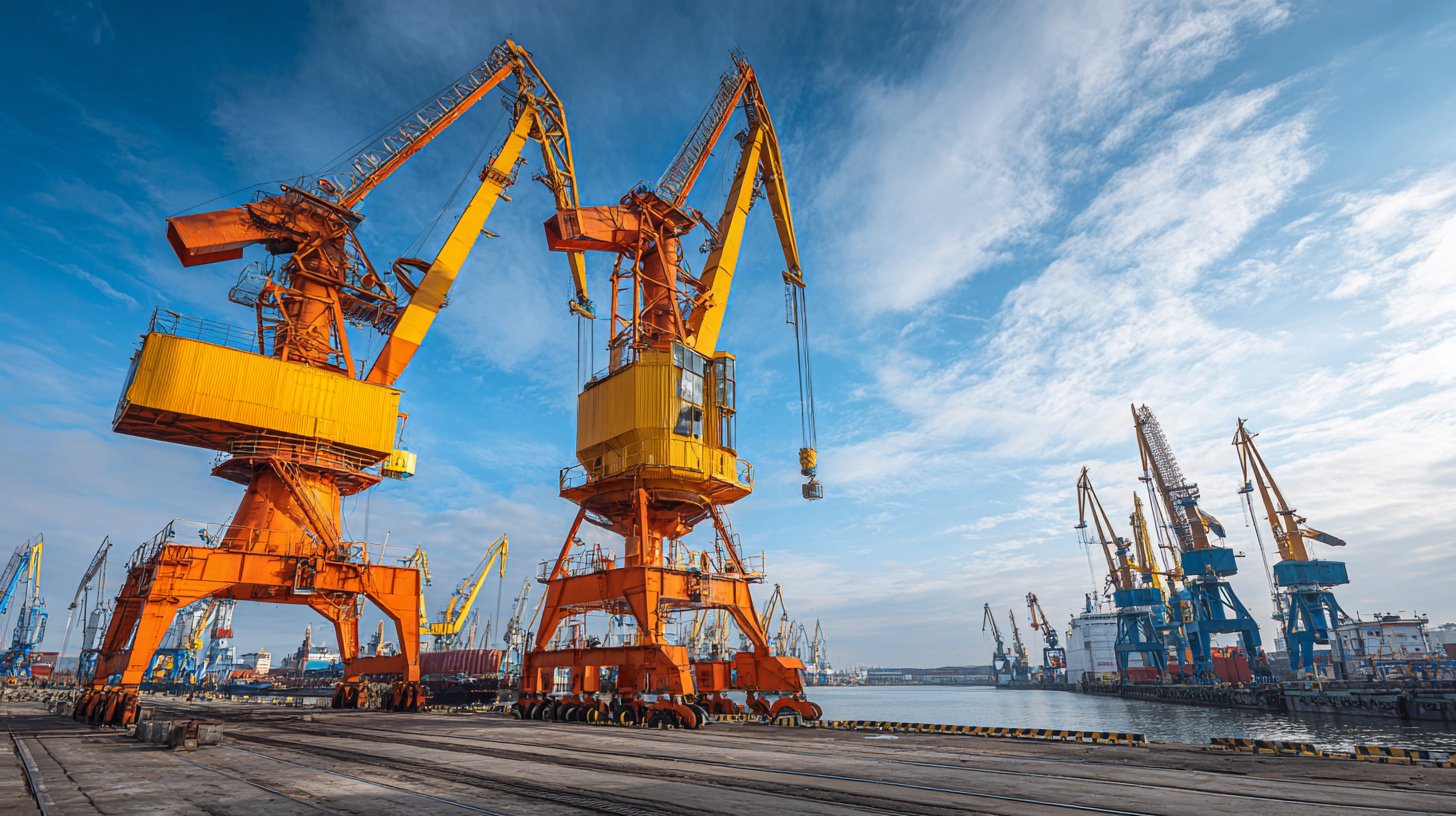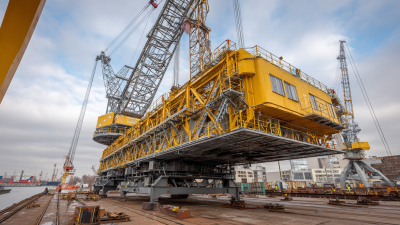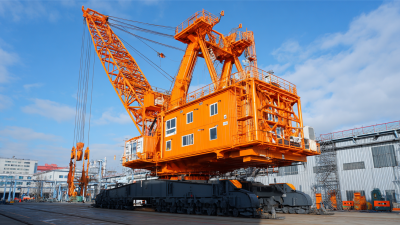Leave Your Message
-
Phone
-
E-mail
-
WhatsApp
 Choosing the right Shipyard Gantry Crane for your marine projects is a crucial decision that can significantly influence the efficiency and safety of your operations. As these cranes are vital for lifting and moving heavy loads in shipbuilding and repair scenarios, understanding the various factors involved in selecting the ideal model is essential.
Choosing the right Shipyard Gantry Crane for your marine projects is a crucial decision that can significantly influence the efficiency and safety of your operations. As these cranes are vital for lifting and moving heavy loads in shipbuilding and repair scenarios, understanding the various factors involved in selecting the ideal model is essential.
Whether you are managing a large commercial yard or a smaller facility, the specific requirements of your projects, including load capacity, height, span, and mobility, will dictate the best solution for your needs. This guide will explore the key aspects to consider when selecting a Shipyard Gantry Crane, ensuring you make an informed choice that enhances productivity and meets your operational demands.
From understanding technical specifications to evaluating vendor options, this comprehensive overview will equip you with the knowledge necessary to select a gantry crane that aligns perfectly with your marine projects.
 When selecting the right shipyard gantry crane for marine projects, one must consider several key factors to ensure optimal performance and safety. The first major consideration is the crane's load capacity. Understanding the maximum weight that will be lifted is crucial, as it informs the specifications required for safe operation. Additionally, the span of the crane should be evaluated; it needs to accommodate the dimensions of the vessels and the working area effectively.
When selecting the right shipyard gantry crane for marine projects, one must consider several key factors to ensure optimal performance and safety. The first major consideration is the crane's load capacity. Understanding the maximum weight that will be lifted is crucial, as it informs the specifications required for safe operation. Additionally, the span of the crane should be evaluated; it needs to accommodate the dimensions of the vessels and the working area effectively.
Another critical aspect to contemplate is the operational environment. Factors such as wind conditions, water exposure, and space constraints can significantly impact the choice of crane. A crane designed for outdoor use should have features that enhance its durability against harsh weather. Furthermore, one should also look at the mobility options of the crane. Fixed or mobile gantry cranes serve different purposes; thus, aligning the crane's mobility with your project requirements is essential for maximizing efficiency and productivity.
When considering the right shipyard gantry crane for marine projects, it's essential to evaluate the various types available and determine which best suits your specific needs. In a prominent facility like Bohai Shipyard in Huludao, China, where advanced submarines are constructed, different gantry cranes are required for various tasks, including heavy lifting and precise installation.
There are several types of gantry cranes, including single girder, double girder, and adjustable gantry cranes. Single girder cranes are typically used for lighter loads and smaller spaces, while double girder cranes are better suited for heavier loads and larger operations, enabling more stability and lifting capacity. Adjustable gantry cranes offer versatility, allowing you to modify the height and width to accommodate different projects.
Tips for selecting the right gantry crane include assessing your project's specific weight requirements and space constraints. Ensure that the crane’s specifications align with the unique needs of your tasks, considering factors such as load capacity, lifting height, and mobility. Additionally, it's advisable to consult with crane manufacturers or operators who can provide insight into the best options tailored for marine applications.
This chart illustrates the weight capacity of different types of shipyard gantry cranes to help you choose the right one for your marine projects. Each type of crane has its own specific role and maximum load limit which can significantly impact your operations.
When selecting the right shipyard gantry crane for marine projects, several essential specifications should be prioritized. First and foremost, the lifting capacity is critical. This determines the maximum weight the crane can handle, which is vital for moving heavy loads safely and efficiently. Projects may require cranes with varying capacities, so understanding the specific needs of your marine operations is key.

Another crucial specification is the span of the crane. This refers to the distance between the legs of the gantry, affecting its ability to reach different areas of the working site. A wider span can facilitate the movement of larger vessels and equipment, while also contributing to overall operational flexibility. Additionally, the height under the beam is important, particularly for tasks involving tall structures or equipment, ensuring that there is adequate clearance for all operations. By focusing on these specifications, you can choose a gantry crane that optimally supports your marine projects.
When considering investing in a gantry crane for marine projects, a comprehensive cost-benefit analysis is essential. This analysis should factor in not only the initial purchase price but also the long-term benefits, such as increased efficiency, reduced labor costs, and enhanced safety. By weighing these financial elements against the anticipated operational improvements, stakeholders can make informed decisions that align with their project goals.
The rising trend in the adoption of advanced heavy lifting equipment, particularly mega STS cranes, highlights the growing demand for robust solutions in the marine industry. These cranes offer significant advantages, including higher lifting capacities and automated features that streamline operations. As the global heavy lifting equipment market is projected to grow substantially, investing in such technologies may not only improve operational effectiveness but also yield a positive return on investment over time. A thorough assessment of these factors will ultimately guide companies in selecting the right equipment for their marine endeavors.
When selecting a gantry crane for shipyard applications, safety features and compliance standards must be at the forefront of consideration. The International Organization for Standardization (ISO) has established guidelines that are crucial for ensuring the safe operation of cranes in marine environments. According to ISO 4301, cranes must comply with design and operational safety standards that mitigate the risks inherent in heavy lifting operations. This includes features such as overload protection, emergency stop buttons, and effective anti-collision systems, which have been shown to reduce accident rates by up to 30% in industrial settings.
Furthermore, compliance with the American National Standards Institute (ANSI) and Occupational Safety and Health Administration (OSHA) regulations is non-negotiable. For instance, OSHA's standards specify that all cranes must undergo regular inspections and maintenance, with a reported 12% of workplace injuries related to crane operations attributed to inadequate safety measures. By investing in cranes that meet these compliance standards, shipyards not only enhance the safety of their operations but also protect their workforce and assets, fostering a culture of safety that can significantly reduce operational downtime and costs over time.
| Feature | Description | Compliance Standards | Safety Features |
|---|---|---|---|
| Load Capacity | Crane's maximum weight it can lift safely | OSHA, ASME | Weight sensors and overload alarms |
| Span | Width covered by the crane's reach | ISO 9001 | Safety limit switches |
| Height | Maximum vertical lift of the crane | ANSI, ASME | Emergency stop buttons |
| Power Source | Type of power used to operate the crane | NEC, IEC | Circuit protection devices |
| Mobility | Crane's ability to move across the site | EN 15011 | Anti-collision systems |






